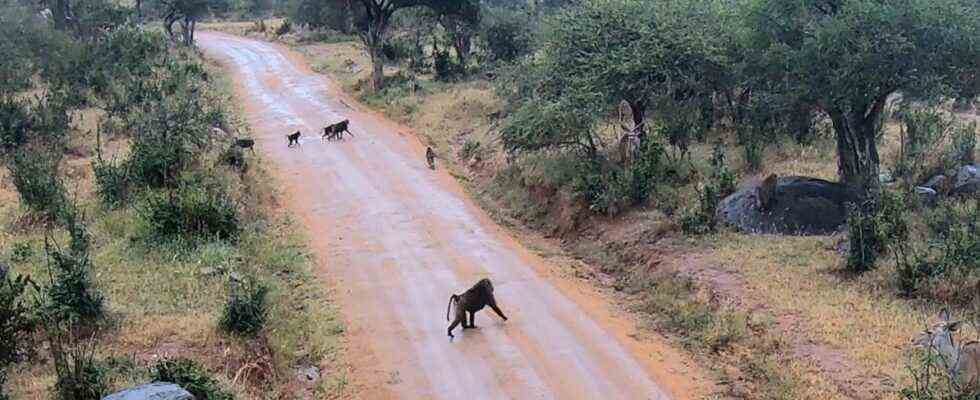Living in a group is, on the whole, a good idea. A lot is easier with others. But as with many beautiful ideas, the pitfalls are in the details. For example, when it comes to the – only supposedly banal – questions: Where do we want to go together? And at what speed? Regardless of the answer, one thing is pretty certain: some will move too fast forward, others too leisurely, and not everyone will like the direction.
Making decisions in a group can be seen as the supreme discipline of social life. And as a recent study suggests, it can’t hurt to look around Anubi baboons as they tackle this challenge. “Baboons live in communities that are similar to those of early humans, that is, in stable groups of different ages,” says Roi Harel. He is the first author a study just published in the specialist journal Proceedings Bwho analyzed cohesion and decision-making in a baboon community in more detail. Accordingly, these primates maintain a form of society that, depending on the situation, oscillates between despotism and democracy. The weakest members of the group accept the greatest compromises – but also have the greatest advantages from living together with their conspecifics.
Harel and his co-authors Carter Loftus and Margaret Crofoot from the Max Planck Institute for Animal Behavior in Konstanz determine this by the speed at which a group of baboons moves. The monkeys have different favorite speeds depending on their size. “Anyone who has ever walked next to a toddler knows how difficult it is to run with someone who has a different physical condition,” says Harel.
GPS collars and pedometers – baboons have never been monitored in such detail
If each monkey followed his personal preference for speed, the group would quickly be torn apart, as computer simulations by biologists have shown. To prevent this, the larger apes run slower, while the young animals run much faster than their physique would actually allow. The little monkeys adapt more than the bigger ones. Presumably, so the authors write, because the young animals on the other hand particularly benefit from the protection of the group. Even in a monkey’s life there is nothing for free.
The researchers gained this knowledge with the help of GPS collars as well as speed and pedometers that they put on 25 baboons at the Mpala research center in Kenya. As the measurement data also showed, the walking position within the group also determined how much the individual animal paid attention to spatial cohesion. Those who ran in front paid more attention to it and took more breaks so that the others could catch up. The animals at the end of the group, on the other hand, allowed themselves greater distances to their conspecifics – perhaps knowing that others would take care of the cohesion.
Possibly these rules of movement even limit the size of a horde, write the authors. The larger a group, the more clearly each animal has to deviate from its preferred speed. From an energetic point of view, this is probably no longer worthwhile for the particularly small members at some point, especially since larger hordes have to cover longer distances to reach good feeding or sleeping places.
When it comes to group decisions, the dominant male usually holds back
And it’s not just the speed that everyone has to agree on. Before that there is still the question: Where do we want to go anyway? There are also rules for this in a baboon group, some of which follow the majority principle, as Crofoot and her colleagues have shown in previous studies. Assume that five animals in a group turn to the right, ten animals to the left. What is the rest of the horde doing? If the angle between the two suggested directions is small, less than 90 degrees, the remaining monkeys literally choose the middle path and walk between the two subgroups. If the angle is significantly more than 90 degrees, the remaining monkeys follow the larger subgroup. However, one factor can override this majority rule: roads. The animals prefer to follow them because they get on more easily there. If some monkeys want to convince their conspecifics to turn off a road into impassable terrain, they would have to be very numerous to convince the rest of the group.
The social rank of the animals does not play a role in any of these decisions. This is astonishing, because otherwise baboons have a thing for clear hierarchies. In each group there is a clearly dominant male who claims all kinds of privileges. It eats when, what and for as long as it wants and secures the best sleeping places and mating opportunities. There is then no longer any question of majority-based decisions, the alpha male rules in these situations as a despot. “In one-to-one interactions, the dominant male clearly has power over the others,” says Harel. Why is the dominant male unable or unwilling to exert his influence in such situations? Perhaps in the answer to this question lies the secret of peaceful group life.

